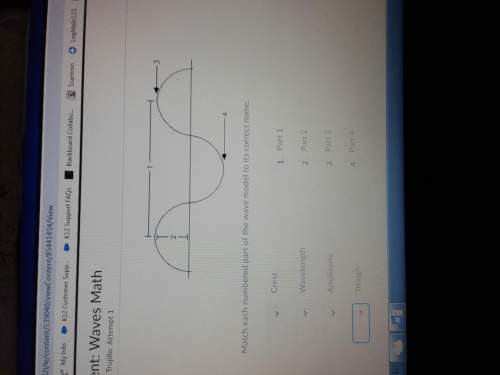
In a laboratory experiment the time it takes a marble to fall from a table to the floor is recorded with a stopwatch. The results are 0.38 seconds, 0.37 seconds and 0.39 seconds respectively. Most students in the lab believe that these times are statistically the same, within experimental error. What would be a good method to confirm the results?

Answers: 3
Another question on Physics

Physics, 21.06.2019 22:30
Under conditions for which the same room temperature is maintained by a heating or cooling system, it is not uncommon for a person to feel chilled in the winter but comfortable in the summer. provide a plausible explanation for this situation (with supporting calculations) by considering a room whose air temperature is maintained at 20â°c throughout the year, while the walls of the room are nominally at 27â°c and 14â°c in the summer and winter, respectively. the exposed surface of a person in the room may be assumed to be at a temperature of 32â°c throughout the year and to have an emissivity of 0.90. the coefficient associated with heat transfer by natural convection between the person and the room air is approximately 2 w/m2 â‹…â‹… k. what is the ratio of the thermal resistance due to convection to the thermal resistance due to radiation in the summer? what is the ratio of thermal resistances in the winter
Answers: 1

Physics, 22.06.2019 01:00
First, launch the video below. you will be asked to use your knowledge of physics to predict the outcome of an experiment. then, close the video window and answer the question at right. you can watch the video again at any point. part a as in the video, we apply a charge +q to the half-shell that carries the electroscope. this time, we also apply a charge –q to the other half-shell. when we bring the two halves together, we observe that the electroscope discharges, just as in the video. what does the electroscope needle do when you separate the two half-shells again? view available hint(s) as in the video, we apply a charge + to the half-shell that carries the electroscope. this time, we also apply a charge – to the other half-shell. when we bring the two halves together, we observe that the electroscope discharges, just as in the video. what does the electroscope needle do when you separate the two half-shells again? it deflects more than it did at the end of the video. it deflects the same amount as at end of the video. it does not deflect at all. it deflects less than it did at the end of the video. submit
Answers: 2

Physics, 22.06.2019 03:00
Isla’s change in velocity is 30 m/s, and hazel has the same change in velocity. which best explains why they would have different accelerations? isla had negative acceleration, and hazel had positive. isla had a different time than hazel. isla had positive acceleration, and hazel had negative. isla went a farther distance than hazel.
Answers: 1

Physics, 22.06.2019 05:30
Choose the most likely outcome of this scenario: jen decided to go bike riding without a helmet. while no one is around during her ride, she is thrown from her bike when her wheel goes into a pothole. she is not injured, but she is terrified to get back on her bike. what happens next? a. her physical health is affected even though she wasn't hurt. b. her mental and emotional health are affected because she is afraid to get back on her bike. c. her social health is affected because she is worried her friends saw the fall. d. her overall health is not affected at all by her fall.
Answers: 1
You know the right answer?
In a laboratory experiment the time it takes a marble to fall from a table to the floor is recorded...
Questions








Mathematics, 22.04.2020 23:48

Advanced Placement (AP), 22.04.2020 23:48






History, 22.04.2020 23:48

Chemistry, 22.04.2020 23:48

Mathematics, 22.04.2020 23:48

Biology, 22.04.2020 23:48

Mathematics, 22.04.2020 23:48

Social Studies, 22.04.2020 23:48




